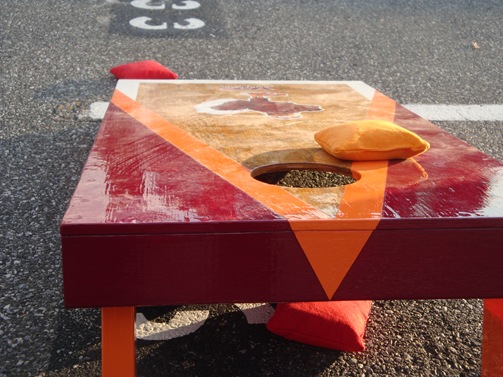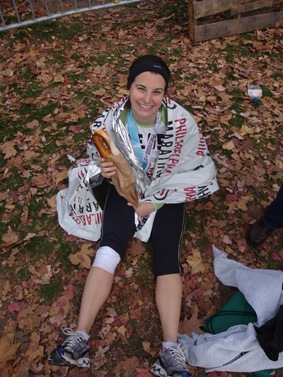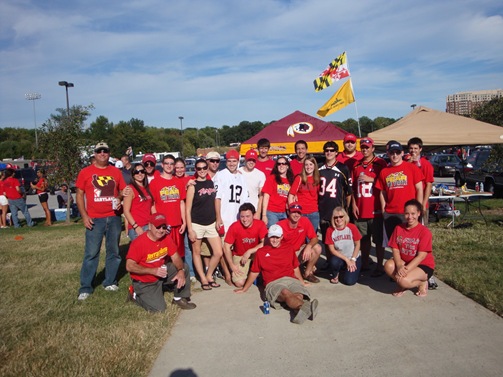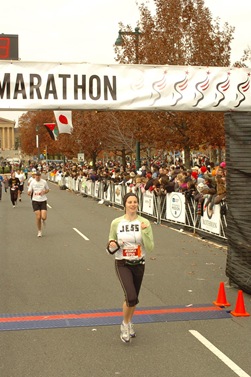Hi Healthy Happier Readers! I’m Jess from JessRuns.com.

I’m super excited Ashley asked me to write a post in her Marathons and Moderation series. Fall is always the hardest part of the year for me to train because I have to balance my weekend long runs with my Saturday tailgating habit.

Spending six hours every weekend at a tailgate hanging out with friends, eating bad-for-you food and not getting nearly enough sleep doesn’t tend to mesh so well with long-distance training. Some of my tailgates start at 6 a.m., which means I can’t exactly fit long runs in before the tailgate.
But after almost five seasons of somehow managing to balance both training and tailgating, I have some fine-tuned tips to share so you can make it work too!

I hope you’re ready for some planning.
Step 1. Before the season starts, pull out the football schedule and figure out which weekend your team has a bye and when your team is on the road. Take advantage of those weekends to fit in your longest and most demanding workouts because you won’t have to stress out about getting to a game or a tailgate in time.
 Step 2. Identify the most important games. For me, this is always homecoming and a few other big conference games. Plan your short runs or recovery runs on those days.
Step 2. Identify the most important games. For me, this is always homecoming and a few other big conference games. Plan your short runs or recovery runs on those days.
Step 3. Build your training plan with flexibility in mind. There may be a weekend where one of the biggest games of the season conflicts with your 20 mile long run. Since you can’t move the game, I recommend moving the run. Shift it to the other weekend day, wake up extra early before work and get it done on Friday. Don’t stress so much about the day you get it done, just focus on getting the mileage in. 
Step 4. Embrace the weekdays as part of your training. In the beginning of your training plan you can probably fit your longest runs in on Fridays. That way you can save your shorter runs for the weekends when you’ll be busy tailgating.
Step 5. Back off the booze at the tailgates. Yes, it is possible to tailgate without going overboard. If you have a big run planned for the next day, keep yourself in check.
It’s totally possible to balance tailgating with your friends and training for a race. The key to making it all work is to plan around the biggest games and build enough flexibility into your training plan that you can move your long runs around.








